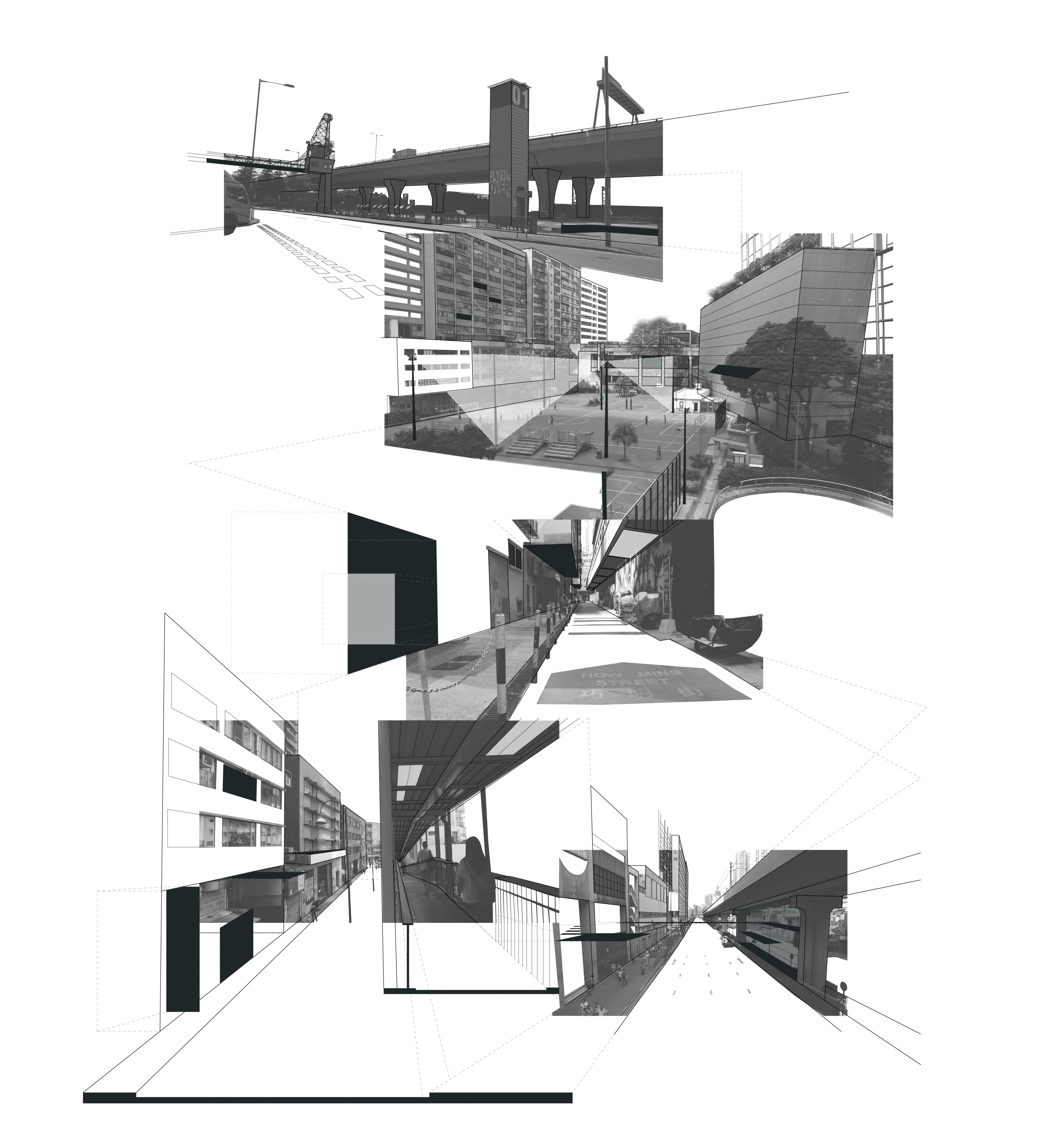MISE-EN-URBANITE
|
This thesis aims to explore scenographic potential of architecture and a sequential experience in relation to its context. With urban space as potential site, the MISE EN SCENE in fostering movement and events in different scale and time will be developed. WHAT Abandoned KMB Bus Depot & surrounding streetscape Proposed site would be the abandoned bus depot (in purple) and the adjacent urban fabric(alleys, flyovers and open space in yellow) in Kwun Tong. The site is a former industrial area in transition into a CBD situated in the context of Energizing Kowloon East movement. Scattered cultural events take place along the promenade yet rather disconnected to the north residential side of Kwun Tong Road. The theatrical nature of architecture will be tested on the site where site qualities included: 1) Urban void/ in-between space, 2) Allow centrifugal movement, 3) Linear journey from individual to collective, and 4) Vertical complexity. The scale of the project will be from a linear journey, street/alley (individual entry) to an urban open space (collective use). The site is selected as the area is experiencing a change of nature from a more localized district to the city’s next commercial and cultural hub, yet empty with infrastructure and awaits the imprint of an identity. By setting out the journey to trigger social interactions and collective experiences, this thesis aims to become the tool to ignite neighbourhood’s creative use of urban space. The program would be a sequence of urban theatre from street to auditorium scale. The extent of the site bridge the residential district north of Kwun Tong Road, pass through the liminal urban fabric of the old industrial area and extend into the promenade which face the Kai Tak Cruise Terminal. This guarantees enough pedestrian flow to activate the area and allows urban rituals to take place through the journey.
WHY The role of theatre architecture and performace-audience relationship has been evolved according to the change of social situation and con[text]. Permanent architectural features in times of Greek and Reinassance theatre depict a distinct social hierarchy and passive audience role. In the 18th Century Bourgeois theatre, a controlled perspective with picture frame stage denotes a similar situation. The urge of creating the mass culture and a people’s theatre was rapidly shaped in parallel with the development of new media including radio, film and TV. Starting from the 20th Century, discussions to reassess definition of theatre and boundaries between theatre and other cultural/living domains arised. The thrust theatre and Hanamichi stage serve to foster dynamic reciprocal exchange of energy between performers and viewers. Contemporary theatre architecture looks into the composition of a spatial stage with fluid movement and changing pespectives, and breaks through from the interiority to engage with its environment. Spatial configuration and orchestration of movement becomes important elements in integrating the performance space and living reality. The focus of the thesis is on the diverse possibilities of theatre architecture in everyday life, and how would it evolve and shape people’s behaviour. Instead of theatre in auditorium scale, the thesis will break down the performative nature of architecture along the streets which helps to orchestrate events and community building in liminal context, where “Architecture ceases to be a backdrop for actions, becoming the action itself”. HOW To develop prototype of different spatial configuration in various scales. Use model and drawings with material research and multi-media including light and projection to design passersby’s experience. Step 01 BIBLIOGRAPHY Seminal Projects Contemporary Texts Technical research |



